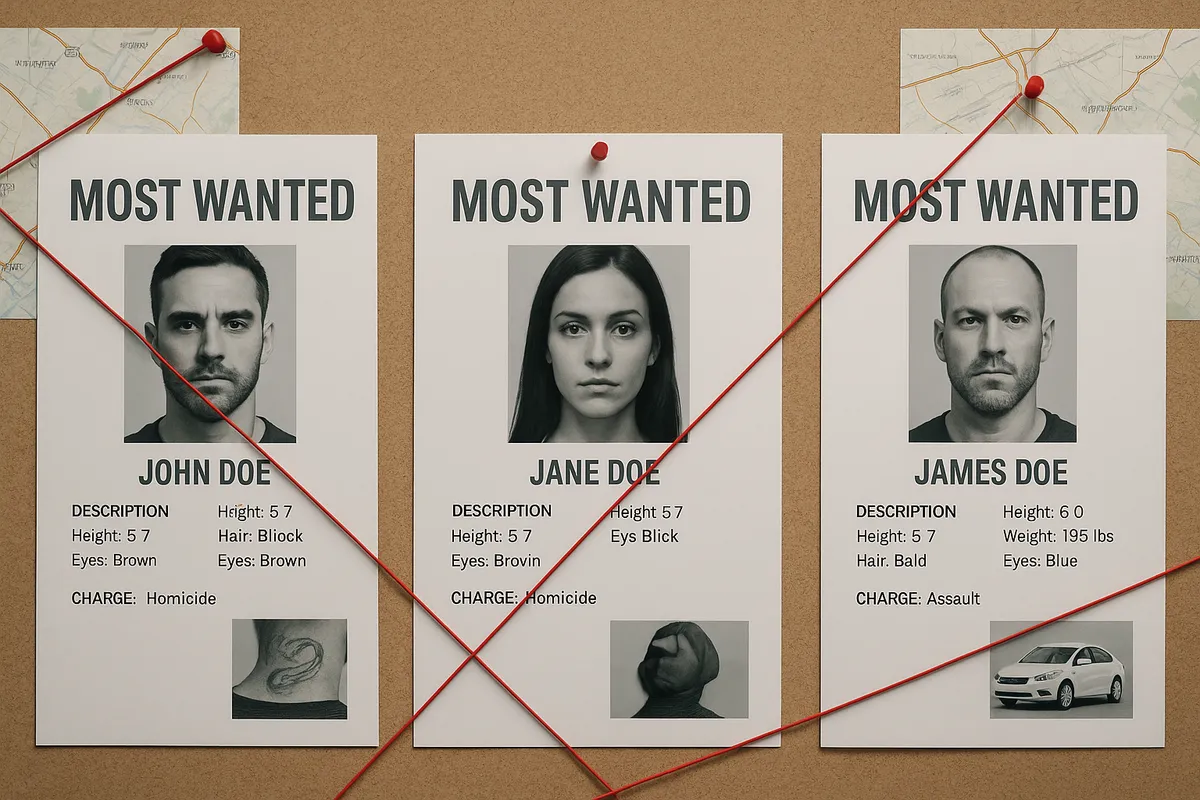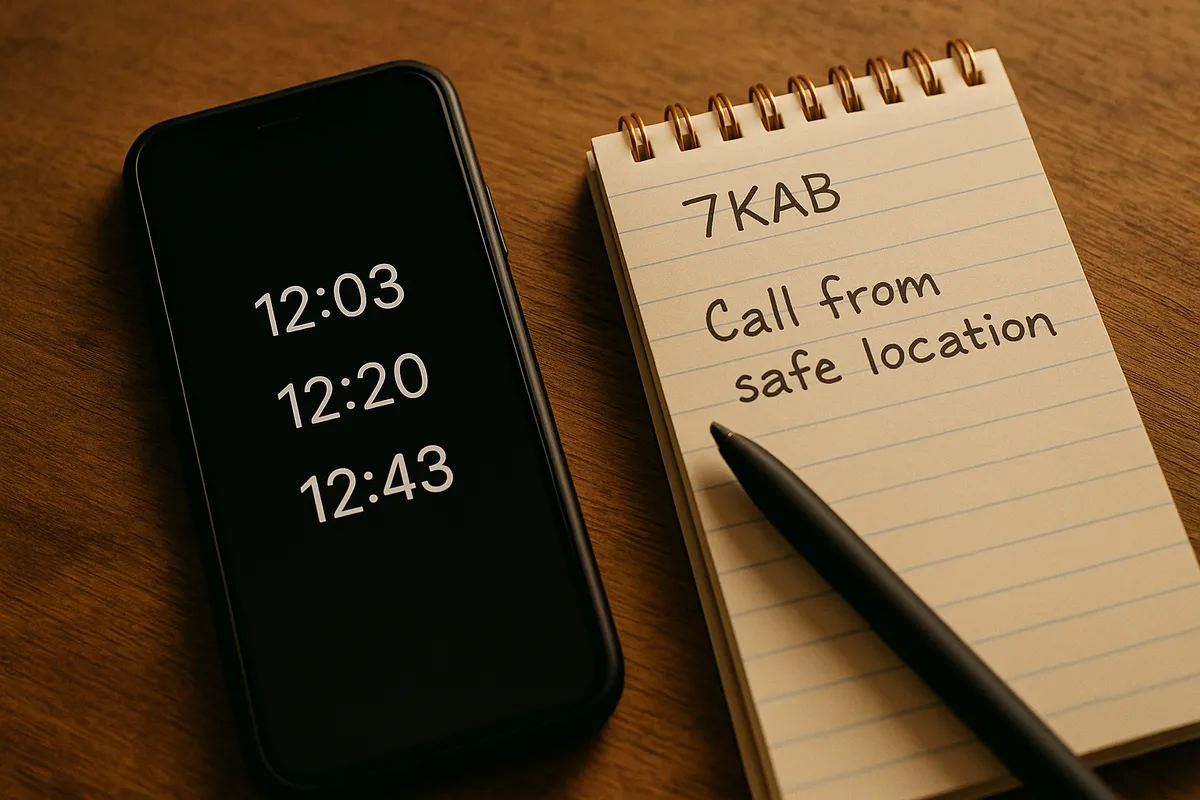America’s Most Elusive Fugitive: What Are We Missing?
Inside the Manhunt: Why America’s Most Elusive Fugitive Still Isn’t Caught (Introduction)
One elusive fugitive can outmaneuver hundreds of leads, dozens of agencies, and years of public attention. For true-crime fans, that tension is the hook—and the frustration. The FBI’s iconic list has shown that the public helps crack cases, with more than 160 captures linked to citizen tips, yet some offenders slip the net for decades (FBI Top Ten overview and history). (fbi.gov)
The question isn’t only “Where are they?”—it’s “What are we missing?” This guide maps how a fugitive evades capture, who hunts them, where tech helps (and fails), and how you can contribute without crossing ethical or legal lines.

Defining a Fugitive: Legal Status, Warrants, and What “Wanted” Really Means
A fugitive is not just “missing”—they’re actively avoiding lawful custody. In the U.S., crossing state lines to dodge prosecution can trigger a federal “Unlawful Flight to Avoid Prosecution” (UFAP) case under 18 U.S.C. § 1073, which can bring national resources into play (full statute text). (law.cornell.edu)
An arrest warrant sets the legal foundation; a “wanted” poster widens the search through publicity. UFAP does not replace the underlying state charges—it adds a federal hook that lets agencies coordinate beyond a single jurisdiction.
Arrest Warrants vs. UFAP Warrants
A local warrant authorizes an arrest; a UFAP complaint helps federal partners pursue across borders. That escalation matters when a fugitive changes cars, phones, and identities to stay one county ahead.
Profile of an Elusive Fugitive: Patterns, Psychology, and How Fugitives Evade Capture
Long-term fugitives live by routines that look ordinary—and that’s the point. They reduce surface area: fewer close relationships, cash-first life, seasonal or gig work, and safe identities that survive casual checks. Behavioral analysts flag habits like strict cash discipline, limited digital footprint, and controlled travel as red flags (FBI Behavioral Analysis overview). (fbi.gov)
Psychology matters. High-functioning fugitives practice “needs-based risk,” taking chances only when food, shelter, or medical care demands it. The first 30 days are chaos; after that, patterns harden and tips drop.
Patterns That Buy Time
Think compartmentalization. A fugitive splits identity (ID), housing, earnings, and transit into separate bubbles, so one exposed piece doesn’t crash the rest. That’s why multi-agency teams try to hit several “bubbles” at once.

From Crime to Disappearance: A Manhunt Timeline and Updates Framework That Actually Helps
Timelines turn noise into signal. At minimum: offense, suspect ID, charging decision, warrant issue, first public notice, surge of tips, lull, and periodic updates when new evidence drops. Each phase changes what the public can do—spot patterns, verify sightings, or surface old photos.
Use an official backbone for facts and terms so your updates don’t drift. The U.S. Marshals explain how fugitive programs prioritize violent offenders and coordinate across districts (USMS fugitive investigations overview). (prod.usmarshals.gov)
Your Follow-Along Framework
Start a simple log: dates, locations tied to credible sightings, known vehicles, and identifiers (tattoos, scars). Small details—like a work schedule change—often trigger the next lead.
America’s Most Wanted Fugitives: Case Snapshots and What They Teach Us
“Most Wanted” isn’t a trophy; it’s a publicity engine. Patterns repeat: travel through familiar cultural or language communities, cash-heavy economies, and “friend-of-a-friend” housing. The Marshals’ 15 Most Wanted page shows how diverse charges still produce similar evasion tactics (USMS 15 Most Wanted roster). (edit.usmarshals.gov)
Look for practical takeaways: recognizable accessories, unique tattoos, prior jobs with licensing, or medical conditions that force contact with systems. Case pages double as checklists—they tell you what investigators need the public to notice.
What Patterns Recur
Shared traits include older vehicles, temp labor, and out-of-state doctor visits under assumed names. Each is a chance for a sighting that fits the timeline you’re building.

The Mechanics of a Manhunt: Task Forces, Warrants, and Interagency Coordination
Modern manhunts are team sports. The U.S. Marshals Service leads multi-agency Regional Fugitive Task Forces that combine federal tools with state and local reach (task force structure). (usmarshals.gov)
Who Does What
- Marshals lead arrests: Broad authority and cross-jurisdictional muscle.
- Locals know the ground: Neighborhood intel, cameras, landlord records.
- Feds bring data: Financial subpoenas, borders, and specialized technical units.
When a task force moves, it pressures multiple bubbles—phones, cars, cash—so the fugitive runs out of safe options.
Forensic Trails and Digital Shadows: Where Technology Finds—and Fails—Fugitives
DNA solves cold cases when CODIS hits; it also fails if no profile exists or samples are degraded. The FBI’s CODIS/NDIS fact sheet explains how national DNA indices work, including quality and privacy guardrails (CODIS and NDIS fact sheet). (fbi.gov)
Phones, license-plate readers, and bank pings can pinpoint movement—but strict warrant rules (for example, historical cell-site data) and OPSEC-savvy fugitives limit value. Expect tech to narrow the grid, not deliver handcuffs.
Where Tech Fails
Burner phones, rideshares, and secondhand cars create false trails. Data is only as good as the human who interprets it—which is why analysts and detectives still win cases together.

Skip Tracing, Bounty Hunters, and Bail Enforcement Agents: Who Tracks a Wanted Fugitive
Private actors track fugitives who skip bail, but they work under state rules that vary widely. For a legal overview of “recovery agents” (also called bounty hunters), the National Conference of State Legislatures offers a helpful summary (NCSL recovery agents guide). (ncsl.org)
Legal Lines to Respect
- Know the limits: Licensing, entry rules, and force restrictions differ by state.
- Do not intervene: Citizens should report information; never attempt an arrest.
- Document safely: Time, location, and plain facts—no face-to-face contact.
Mistakes and Missed Opportunities: What We’re Likely Missing in Long-Term Manhunts
Information silos stall captures. GAO reviews have long flagged inconsistent policies for “sensitive but unclassified” data that complicate sharing across agencies (GAO on information sharing challenges). (gao.gov)
Assumptions also hurt: over-weighting old sightings, ignoring medical needs, or discounting minor thefts that keep a fugitive fed. The fix is disciplined curiosity—refresh hypotheses every quarter, especially after life events that force contact (illness, taxes, family milestones).

Cold Case Breakthroughs and Tips: The Tactics That Finally Crack Cases
When CODIS is quiet, investigative genetic genealogy (IGG) can surface leads. NIJ’s brief explains how labs decide when to use IGG, what samples qualify, and how to combine genealogy with traditional detective work (NIJ primer on forensic genetic genealogy). (nij.ojp.gov)
A Simple Playbook
- Preserve evidence correctly. Chain of custody and storage make or break future testing.
- Re-interview with time. Relationships change; loyalties do too.
- Cross-check overlooked files. Property records, workplace logs, and old burner numbers often align today.
Public Involvement That Works: How to Search Local Fugitives Safely and Responsibly
You can help—safely. Start with the official “Fugitives” section and filter by location or crime category to learn who’s wanted near you (FBI fugitives directory). (fbi.gov)
Stay Safe First
Observe, don’t approach. Note time, place, vehicle plates, scars or tattoos, and companions. Call in details from a safe location and let professionals handle the rest.

Media, Podcasts, and Online Sleuths: Ethical Lines and Productive Citizen Sleuthing
Attention can help—harm, too. Ethical guidelines from professional journalism stress accuracy, verification, and minimizing harm when discussing suspects and victims (SPJ Code of Ethics). (spj.org)
A Quick Ethics Check
Ask: Am I amplifying rumor? Could a post prompt vigilante behavior? If in doubt, hold and verify with an official case page before sharing.
Building a Smarter Watchlist: Patterns Across Most Wanted Fugitives in America
Data tells a story of pressure and persistence. In FY 2024, the U.S. Marshals reported 74,222 fugitive arrests and nearly 89,000 warrants cleared—an average of 297 fugitives per operational day (USMS FY 2024 stats press release). (usmarshals.gov)
Signals to Watch
Long-term fugitives tend to gravitate toward cash economies, regions with existing contacts, and identities that pass a quick glance. Public tips often spike after local coverage—so keep eyes on your field office pages.
What to Do If You Have a Lead: Reporting Protocols, Safety, and Legal Considerations
Report, don’t pursue. If you have credible information, use the FBI’s official contact pathways (field office, tip line, or online portal) and stick to facts (FBI contact and tip guidance). (fbi.gov)
Make the Call, Not the Approach
Provide time, place, identifiers, and why you believe it’s the same person. If the fugitive is tied to a Marshals case, you may also call 1-877-WANTED-2. Your safety—and the integrity of the case—come first.
Ready to channel your curiosity productively? Keep notes, verify against official pages, and submit what you know through official tip portals.

Conclusion: The Next Breakthrough—And How You Can Help (Search Local Fugitives Now)
Every manhunt turns on one detail noticed by the right person at the right time. Agencies bring warrants, tech, and teams—but public vigilance closes the gap. If a name or face rings a bell, check official pages and send a tip immediately (USMS fugitive investigations hub). (prod.usmarshals.gov)
We don’t need more noise—we need sharper eyes. Keep timelines, revisit assumptions, and focus on verifiable details. Your careful observation could be the pivot from cold trail to capture.
FAQs
Can a private citizen detain a fugitive? No. Citizens should not attempt detentions. Even licensed bail recovery agents operate under strict state rules. The safest and most effective step is to document details from a distance and report through official channels.
What’s the difference between “missing” and “fugitive”? A missing person’s whereabouts are unknown without evidence of evasion. A fugitive is avoiding lawful custody—after charges or a warrant—so investigators use different tools and urgency.
Does technology make fugitives easier to catch? It helps narrow the search—DNA, license-plate readers, and phone records can add clues—but legal standards and savvy offenders keep tech from being a magic bullet. Human analysis still connects the dots.
Why do updates on a fugitive stall for months? After the publicity surge, tips often taper and investigators wait on lab work, financial records, or new leads. That lull doesn’t mean a case is cold; it means the next credible data point will drive the next move.
What should I write down if I think I saw a fugitive? Start with time, location, and identifiers: tattoos, scars, clothing, vehicle make/model/plate, direction of travel, and companions. Avoid contact, get to safety, and submit the information to the proper agency.
